Description
What is an Active GPS GNSS Antenna Receiver GPS Antenna?
The Active GPS GNSS Antenna is a receiver GPS antenna covering GPS L1/L2, GLONASS L1/L2, COMPASS B1/B2/B3, Galileo E1/L1/E2/E5b/E6 bands external GPS/GNSS/COMPASS/Galileo antenna manufactured by C&T RF Antennas Inc for outdoor Global Positioning System applications.
External GPS/GNSS/COMPASS/Galileo Antenna Frequency including:
GPS L1/L2
GLONASS L1/L2
COMPASS B1/B2/B3
Galileo E1/L1/E2/E5b/E6
Magnetic-mount Active GPS GNSS Antenna Receiver GPS Antenna features a 3-meter Coaxial Cable and SMA male connector. Compatible with GPS, GLONASS, and BeiDou satellites.
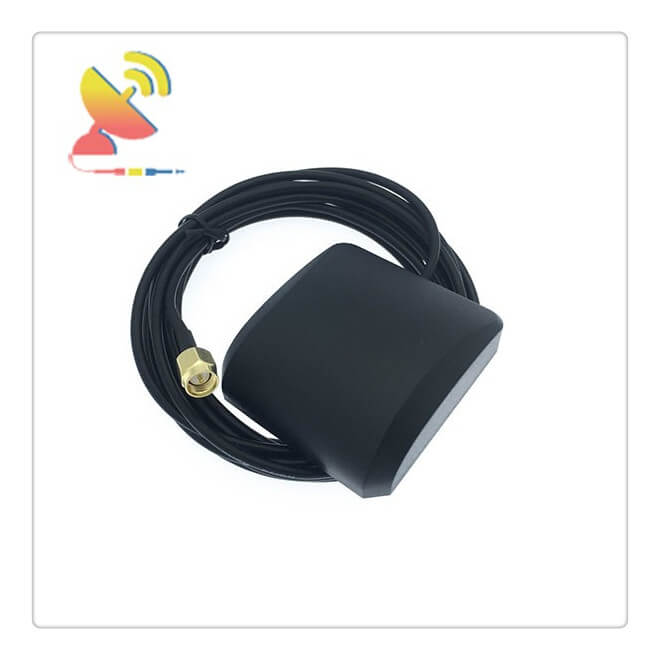
This external Active GPS GNSS Antenna will give you an additional 42 dB of gain. It’s got a 3-meter-long cable so it will easily reach wherever you need it to. The antenna is magnetic so it will stick to the top of a car or truck (or any other steel structure)
Comes with a standard SMA connector on the end. If you want to connect to your device, be sure to pick up a UFL to SMA adapter.
C&T RF Antennas Inc. offers a wide portfolio of Active GPS GNSS Antenna with various versions differing in shape, level of gain, and manner of attachment.
C&T RF Antennas Inc provides internal & external antennas with antenna radio frequencies such as NFC, 169MHz, 230MHz, 315MHz, 433MHz, 868MHz, 915MHz, VHF&UHF, Lora, NB-IoT, ADS-B, GSM, GNSS, GPRS, 1.2 GHz, 1.4 GHz, 1.8 GHz, Wi-Fi 2.4 GHz, 5.8 GHz, Cellular 2G, 3G, 3.5 GHz, 4G LTE, GPS, 5G NR, 6G, etc.
C&T RF Antennas Inc. provides RF antennae with Omni & Directional antenna types such as Dipole Antennas, Whip Antennas, Marine Antennas, Router Antennas, MIMO Antennas, Combo Antennas, PCB Antennas, FPC Antennas, Spring Antennas, Magnetic Antennas, Sector Antennas, Yagi Antennas, and Accessories, etc, for IoT & M2M industries.
Contact us for the active GPS GNSS antenna datasheet, active GPS GNSS antenna pricing, and inventory on the Active GPS GNSS Antenna.
C&T RF Antennas Inc. guarantees a compatible connection between an antenna and all antenna adaptors produced by C&T RF Antennas Inc.
Active GPS GNSS Antenna Receiver GPS Antenna Specifications:
| Item | Specifications | |
| Antenna | Frequency | GPS L1/L2 |
| GLONASS L1/L2 | ||
| COMPASS B1/B2/B3 | ||
| Galileo E1/L1/E2/E5b/E6 | ||
| Polarization | RHCP | |
| Axial Ratio | ≤3dB | |
| V.S.W.R | ≤1.5 | |
| Peak Gain | ≥5dBi | |
| Impedance | 50Ω | |
| Phase Center Error | ±2mm | |
| Horizontal coverage angle | 360° | |
| LNA | Gain | 42±2dB |
| Noise Figure | ≤1.5dB | |
| Passband fluctuation | ±1dB | |
| Supply Voltage | 3~5.5V DC | |
| Current Consumption | ≤45mA | |
| V.S.W.R | ≤2.0 | |
| Mechanical | Connector | SMA Male |
| Radome Material | ABS | |
| Mounting Method | Magnetic Mount and/or Screw | |
| Environmental | Operating Temperature | -40℃~+80℃ |
| Relative Humidity | Up to 95% | |
| Ingress Protection | IP67 (exclude Air vent in screw hole) | |
| Environmentally Friendly | ROHS Compliant | |
China modems for communication China antennas for access points China decorative antenna for the car.
China GPS antenna for iPad Wi-Fi China wireless antennas for Wi-Fi China antenna for remote control.
China telescopic antenna for TV China antenna for two-way radios China antenna for OEM RFID reader.
Panel antennas for communications VHF antennas for communications whip antennas for communication.
3G for communication
HF base antenna for communication
GPS Antenna Types
The function of the GPS receiving antenna is to convert the electromagnetic wave energy of the radio signal sent by satellite into a current that can be picked up by the receiver electronics.
The size and shape of the antenna are very important because these characteristics determine the ability of the antenna to acquire weak GPS signals.
According to needs, the antenna can be designed to work on a single L1 frequency, or on two frequencies, L1 and L2.
Since GPS signals are circularly polarized waves, all receiving antennas are circularly polarized (because the polarization direction of the ground antenna signal is based on the polarization direction of the satellite antenna.
For circular polarization, you only need to aim at the satellite to receive a satisfactory TV image signal, without adjusting the polarization direction. )Way of working.
Despite various constraints, there are still many different antenna types, such as monopole, dipole, spiral, four-arm spiral, and microstrip antenna.
There are generally two types of built-in antennas for GPS receivers: flat panel antennas and four-arm helical antennas.
Patch Antenna
Panel antennas have become the most commonly used type of antenna due to their durability and relative ease of fabrication. Its shape can be round, square, or rectangular, just like a copper-clad printed circuit board.
It consists of one or more metal sheets, so the most commonly used shape for GPS antennas is a blocky knot, like a biscuit. Since the antenna can be made small, it is suitable for aviation applications and personal handheld applications.
Another main characteristic of the antenna is the gain pattern, that is, directivity. Using the directivity of the antenna can improve its anti-interference and anti-multipath effects.
In precise positioning, the stability of the phase center of the antenna is a very important indicator. The signal gain of the flat-panel antenna is the largest when the satellite is directly above the antenna. There are two problems:
1. The receiving range of the tablet is above the tablet, and the tablet needs to face the sky, which will cause trouble for both handheld and vehicle.
2. Although the satellite signal directly overhead is better and easier to lock if there is no low-angle satellite, the error will be relatively high and the accuracy will be poor.
So based on these shortcomings, GPS receivers began to use four-arm helical antennas.
Quadrifilar Helix Antenna
The four-arm helical antenna is composed of four specifically curved metal lines. No grounding is required.
It has the characteristics of a Zapper antenna as well as a vertical antenna. This ingenious structure enables the antenna to have a gain of 3dB in any direction, which increases the time for satellite signal reception.
The four-arm helical antenna has a full 360-degree receiving capability. Therefore, when combined with a PDA, the four-arm helical antenna can receive regardless of the position of the PDA, which is different from using a flat-panel GPS antenna. The limits of good reception.
Using this kind of antenna, when the satellite appears 10 degrees above the ground plane, the signal transmitted by the satellite can be received.
However, if there are many interference sources near the ground receiving station, the four-arm helical antenna is not suitable, because the four-arm helical antenna has a horizontal gain, which will amplify the noise together and interfere with the satellite signal reception.
However, the four-arm helical antenna produced today can break through the limitations of many traditional antennas.
The antenna is made of ceramics, and the near field is very small, only about 3~5mm, while the near field of some traditional antennas is even as high as 1m. The smaller the near field, the less the human body will cause interference when the user holds the GPS device.

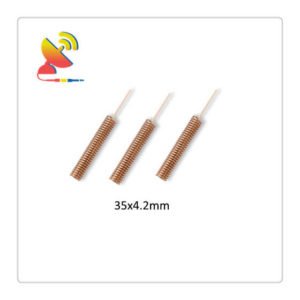
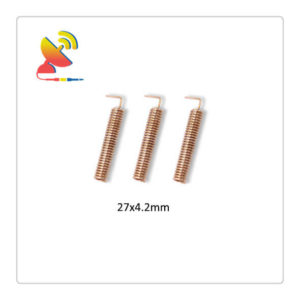
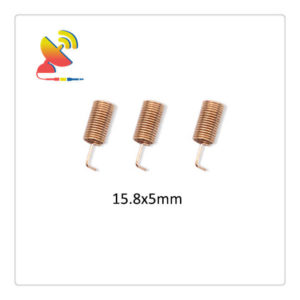
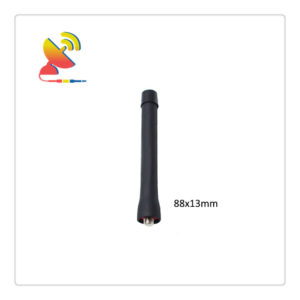
Reviews
There are no reviews yet.